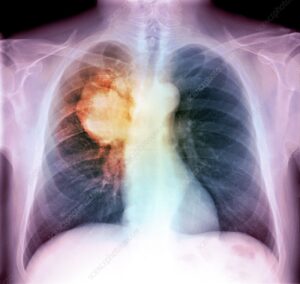The cancer screening method using low-dose CT helps determine lung cancer more effectively. But who should undergo the process remains the primary question. Currently, the guideline set by USPSTF or U.S.
Preventive Services Task Force determines the same. However, a new study has suggested the use of model-dependent studies for it as the latter option is more cost-saving.
The New Study
The study and the supporting data got published in the journal Annals of Internal Medicine. This study underlined that the guidelines offered by USPSTF in 2021 considered only the smoking history and age of the people for categorizing them as eligible candidates for the cancer screening process.
The researchers further mentioned that the guidelines could e helpful for many without any doubt. But, the new process that suggested adopting the risk-based approach would be more inclusive.

The Findings
Iakovos Toumazis is the lead author of this study. Iakovos holds a Ph.D. and works as an assistant professor atthe University of Texas MD Anderson Cancer Center’s Health Service Research department.
Iakovos suggested that the findings of the latest study can be useful for developing guidelines for executing the risk-based model. This cost-effective process can help make the most out of the available medical service resources.
Iakovos further added that the recent recommendations are quite cost-effective but the study findings can help them become more flexible to reach all the people who might benefit from the process.
The Present Practice
At present, USPSTF suggests lung cancer screening using low-dose CT for people aged between 50and 80 years.
They also keep the smoking habit in consideration and recommend the screening to people belonging to the specified age group who smoke at present, used to consume 20 packets of cigarettes every day, or have renounced smoking anytime within the past 15 years.
Suggested Improvements
Experts mentioned that models based on risk calculation may improve the basis and quality of recommendations. The team suggested two processes in particular.
The first method deals with a person’s probability of having lung cancer in the next 6 years. The next one focuses on the chances of death due to lung cancer within the following six years.
The researchers further suggested that these methods based on risk calculations extending up to six years turn out to be more cost-efficient than USPSTF. They also added that risk-based analysis enhances the scope of living a more extended life with adjusted quality parameters.
Toumazis mentioned that the study shows how risk calculation-driven lung cancer screening can be cost-effective for a number of risk thresholds. The expert also recommended that in the future, such risk-based models should be more in practice.
These methods offer a more inclusive treatment procedure and facilities of varying capacities and resources can use these as well.
At SepStream®, we believe in only the best quality solutions that could aid in the process of medical services.
Our AI-integrated, intuitive software solutions ensure next-level imaging outputs. We make sure that our clients get a timely delivery so that medical services never come to a halt.